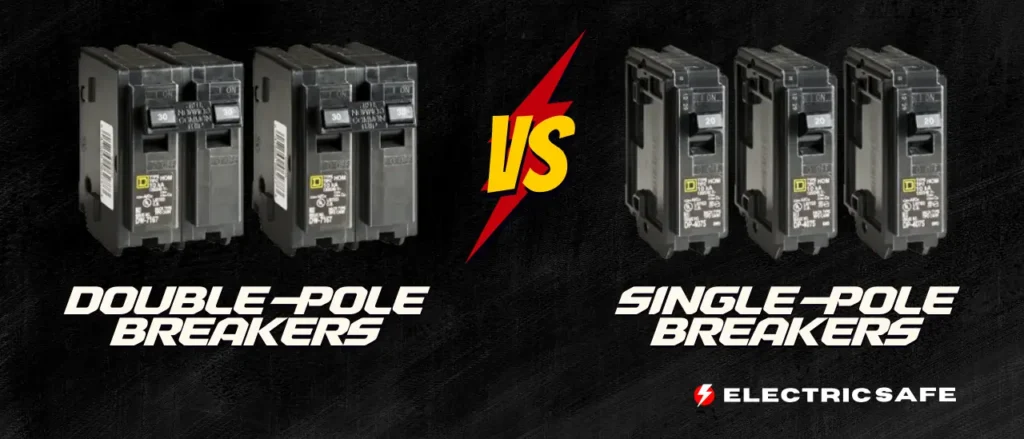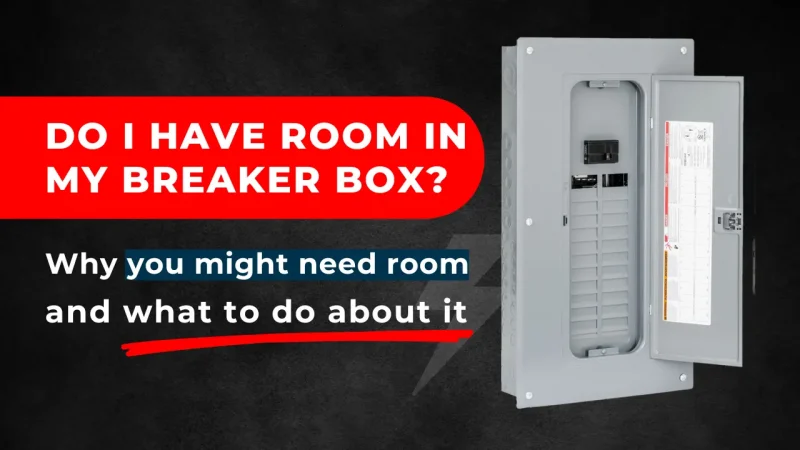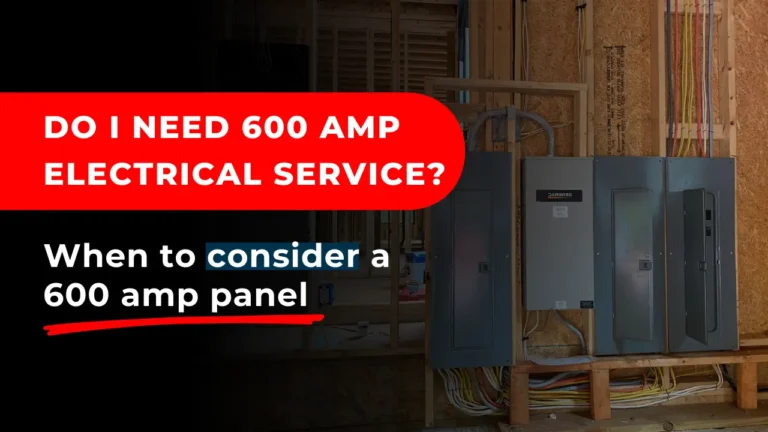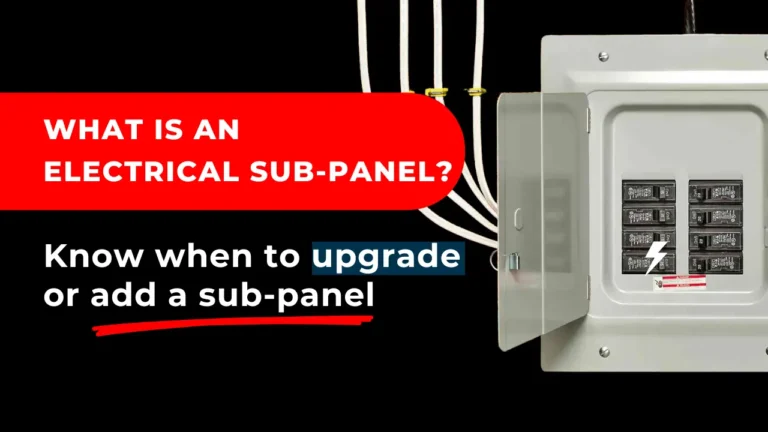Understanding your home’s electrical system might not be the most glamorous part of owning a house, but it’s certainly one of the most important. Think of your breaker box as the heart of your electrical network, quietly working behind the scenes to keep everything running smoothly. When you want to add new appliances or start tackling that big home renovation project, you may need to ask yourself if you have enough room in the box for these projects.
Whether you’re installing an EV charger in your home, planning to finally install that state-of-the-art kitchen, or simply wanting to make sure your home is safe and up to date, knowing the capacity of your breaker box is important. It can be the difference between a smooth, efficient upgrade and a potential nightmare. In this blog, we’re going to break down the basics and show you know to figure out if you have enough room in your breaker box for your future needs.
What is a Breaker Box?
Let’s start with the basics. Your breaker box, also known as the electrical panel, is the central hub of your home’s electrical system. It distributes electricity to all the different circuits and protects them from overloads by tripping and cutting off power. While this can be annoying, it also keeps your family safe by preventing electrical fires and appliance damage.
Why You Might Need More Room in Your Breaker Box
As your electrical needs change, you may find yourself wondering if your current breaker box can handle the load. This is a common concern for many homeowners, and it’s essential to know when it’s time to consider an upgrade. Let’s look at a few typical scenarios where you might need more room in your breaker box.
Adding New Appliances
Imagine the excitement of installing a luxurious hot tub in your backyard. That dream can quickly turn into a nightmare if your electrical system can’t support it. Hot tubs, air conditioners, and electric car chargers are some of the most power-hungry appliances you can add to your home. Each of these requires a dedicated circuit to operate, which means your breaker box needs to have available slots to add these circuits.
Home Renovations
Planning a home renovation? Whether you’re remodelling your kitchen, adding a new home office, or building an extension, your electrical needs are bound to increase. A modern kitchen renovation might include new high-end appliances, additional lighting, and more outlets. Each of these upgrades demands more power and, in turn, more circuits. The same goes for a home office, especially with the increasing reliance on electronic devices and home automation systems. Building an addition to your home, like a new bedroom or living space, also means expanding your electrical system to cover those areas.
Upgrading Old Wiring
If you live in an older home, your electrical system might not be up to modern standards. These properties often have outdated wiring that can’t handle today’s electrical loads. Upgrading your breaker box can help your home’s wiring meet current safety codes as well as support your electrical demands. You will even add value to the property when it comes time to sell.
More Household Electronics
Think about all the gadgets we use daily—smartphones, tablets, laptops, gaming consoles, smart TVs, and more. Each of these devices adds to the overall electrical load on your home’s system. As your collection of electronics grows, your electrical panel might need to expand to accommodate additional circuits and prevent overloads.
Home Safety Systems
Modern home safety systems, such as security cameras, motion detectors, and smart locks, also require additional power. If you’re upgrading your home security or adding new safety features, you’ll need to ensure your breaker box has enough room to handle the extra circuits. Keeping your home safe and secure is a top priority, and having a well-equipped electrical panel is a key part of that.
Outdoor Projects
Don’t forget about your outdoor spaces! If you’re planning to add outdoor lighting, a new irrigation system, or even a backyard entertainment area, these projects will need their own dedicated circuits. A well-lit garden, a water feature, or an outdoor kitchen can transform your yard, but they also increase your electrical needs.
How Your Breaker Box is Laid Out

Before we get into how to check for room in your breaker box, it’s helpful to understand its layout. Open the panel door, and you’ll see a series of switches lined up in rows. Each switch represents a circuit breaker, controlling power to specific areas of your home. Breakers come in different sizes and configurations, typically either single-pole or double-pole.
- Single-Pole Breakers: These are the most common and occupy one slot in the panel. They provide 120 volts and are used for standard household circuits.
- Double-Pole Breakers: These breakers occupy two slots and provide 240 volts, used for larger appliances like dryers and ovens.
Step-by-Step Guide to Checking for Space
Now, let’s get to the heart of the matter: how to check if you have room in your breaker box.
Step 1: Safety First
Safety is always the top priority when dealing with electricity. Before you begin, turn off the main breaker. This switch shuts off power to your entire home, reducing the risk of electrical shock. Wearing rubber-soled shoes and using insulated tools can add an extra layer of protection.
Pro Tip: Opening the panel yourself is only recommended if you’re comfortable with electrical. Otherwise, call a licensed electrician for help.
Step 2: Identify Extra Knock Out Slots
Once the power is off, open your breaker panel and take a look inside. You’ll notice a series of switches lined up in rows. These are your circuit breakers. Look for any extra knock out slots that are intact—these are the spaces where no breaker is currently installed. (Most modern panels will have a few open slots reserved for future expansions.) Take note of how many extra slots you have; this will give you an idea of how much more you can add.
Step 3: Check for Tandem Breakers
Even if your panel is full, don’t lose hope just yet. Some panels are designed to accommodate tandem breakers, also known as double or slimline breakers. They let you fit two circuits into a single slot, effectively doubling your panel’s capacity without requiring a complete upgrade. Check your panel’s labelling or consult the manufacturer’s manual to see if tandem breakers are an option for your specific model.
Step 4: Evaluate Your Current Load
Physical space isn’t the only consideration. You also need to confirm that your electrical system can handle the additional load. Each breaker in your panel has an amperage rating- usually 15, 20, or 30 amps. This rating indicates the maximum amount of current the breaker can handle before tripping. When you add new circuits, you’re increasing the overall demand on your electrical system.
To determine if your main breaker can handle this increased load, you’ll need to perform a load calculation. This involves adding up the amperage of all existing breakers and comparing it to the capacity of your main breaker. If the total load exceeds the main breaker’s capacity, you may need to upgrade your main service panel or consider load-shedding techniques.
When to Call a Professional
While some homeowners feel comfortable inspecting their breaker boxes, there are times when it’s best to call in a professional electrician for an electrical inspection. Here are a few scenarios where getting professional help is the smart and safer choice.
You’re Unsure
If you don’t feel confident working around electricity, it’s always safer to call a professional. Electricity is nothing to mess around with if you’re not entirely sure what you’re doing. A professional can ensure the work is done correctly and safely, giving you peace of mind.
Complicated Upgrades
If you’re planning to add significant new loads, such as a home addition or major appliance, you want to make sure your system can handle the increased demand. A professional electrician can evaluate your current setup and upgrade your system as needed to accommodate the new demands. This might involve installing new circuits, upgrading your main panel, or even replacing wiring to ensure everything runs smoothly and safely.
Code Compliance
Electrical work needs to meet local building codes. A licensed electrician is familiar with these requirements and will make sure that all electrical work is up to code. This is especially important if you’re doing renovations or adding new features to your home, as non-compliant work can lead to safety hazards and issues if you decide to sell your home in the future.
We’ll Tell You If You Have Room in Your Breaker Box!
Whether you’re adding new appliances, undergoing home renovations, or making sure your system meets current safety standards, knowing your breaker box’s capacity can save you time, money, and potential headaches. If you’re unsure or need an upgrade, consulting with a professional is the smart move.




